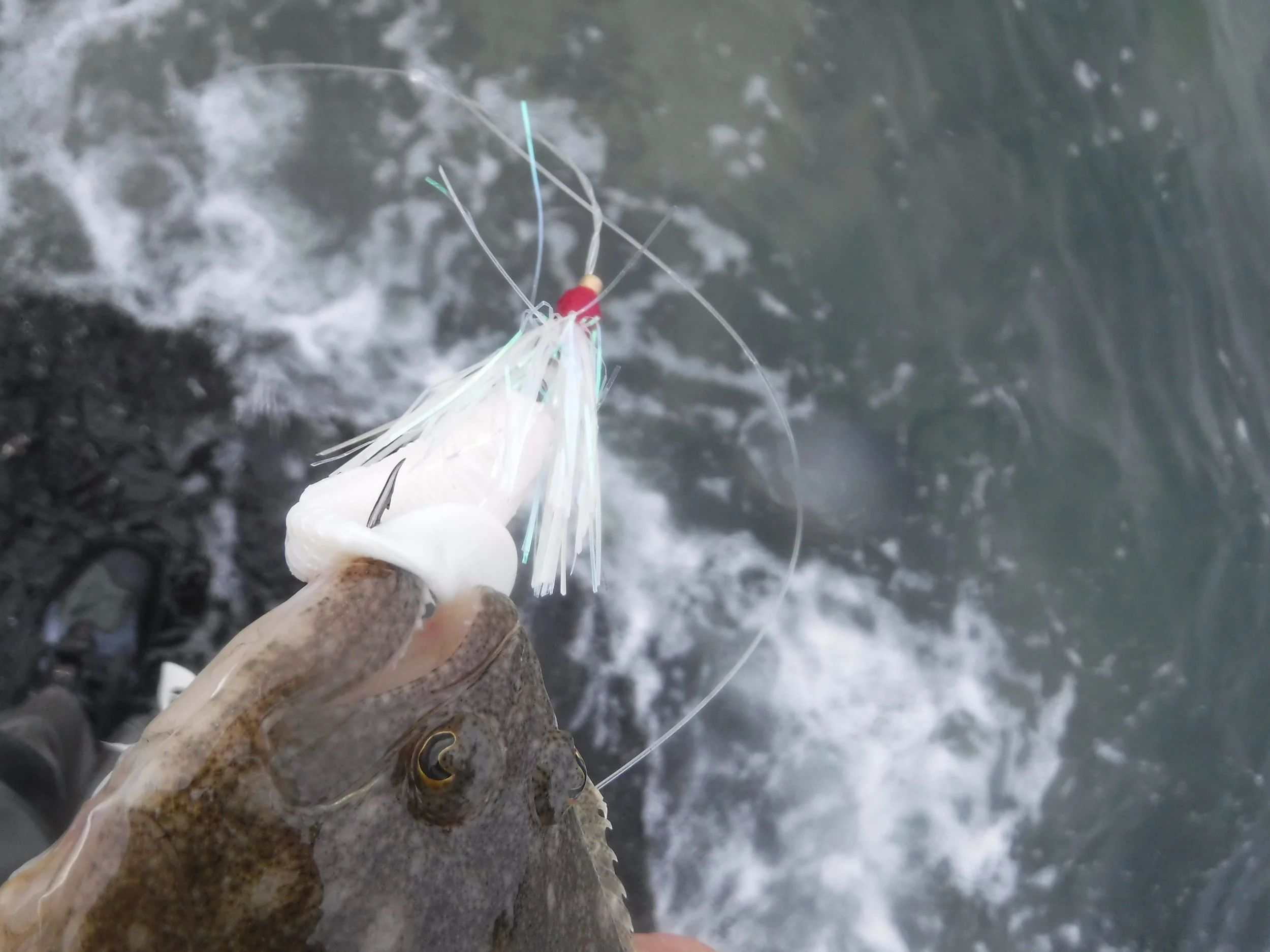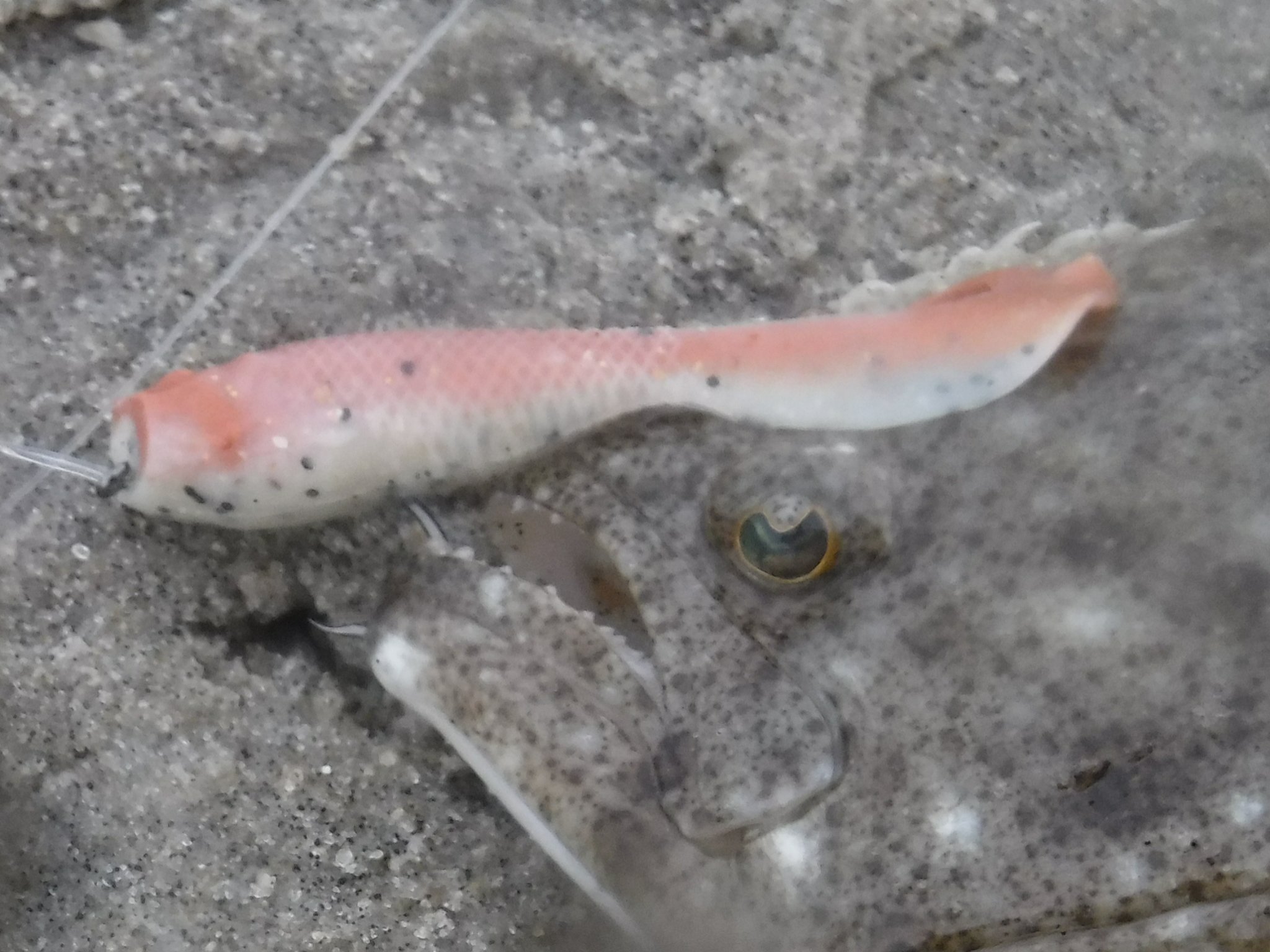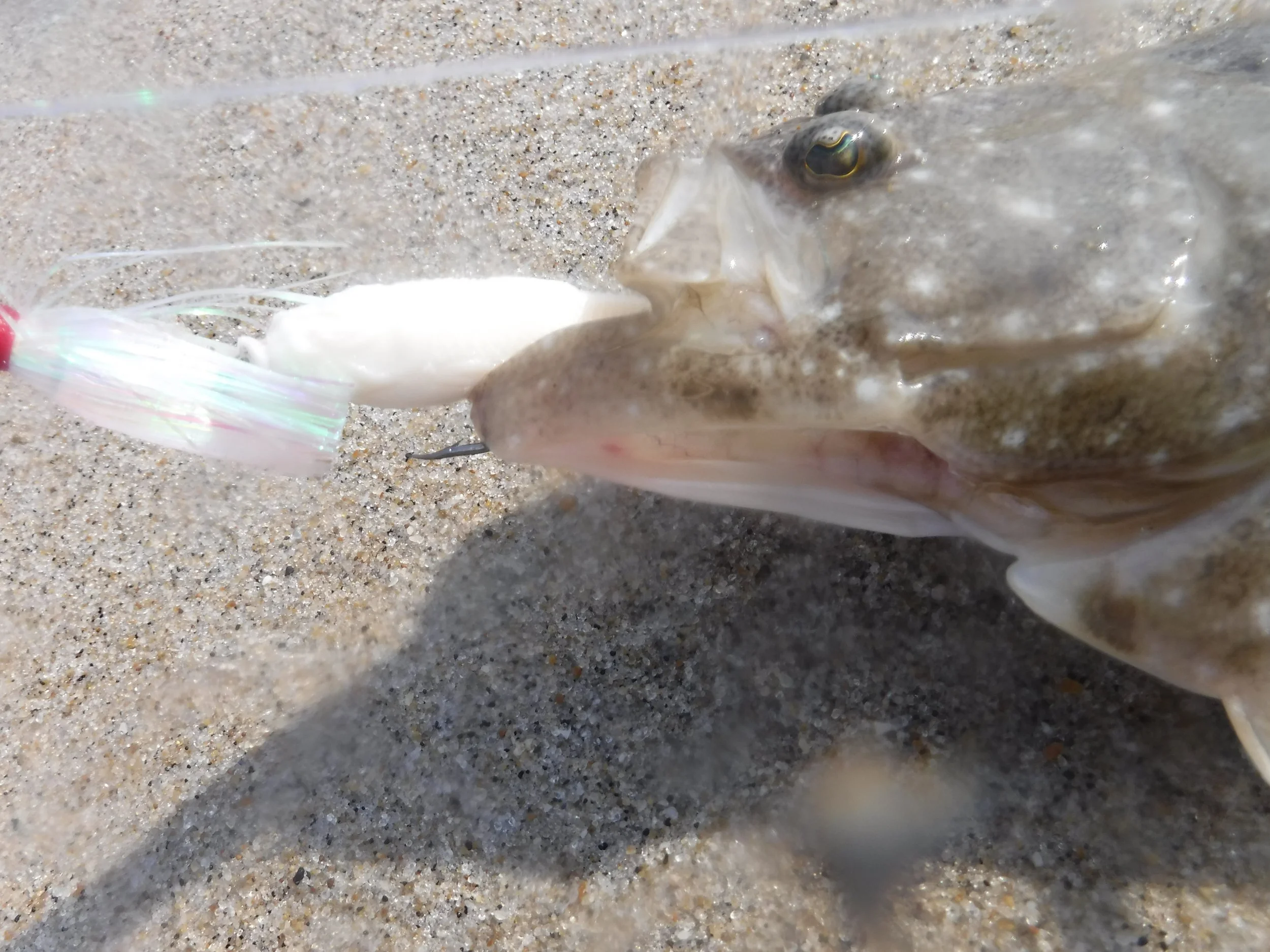Eyes of the Fluke
If you fish the beach in New Jersey and want to keep a fluke, the 2022 regulations (3 fish bag limit: 2 fish at 17” to less than 18'“, and 1 fish at 18” or greater) work in your favor. In previous years, fluke had to be 18” to keep. It wasn’t uncommon to put back better fish that broke 17” but didn’t hit 18”. That same size fish is now a slot fish and can be kept.
But even with this change, many short fluke will be caught and released. That’s known. Magazine and newspaper articles admit that if you’re surfcasting, you’ll work through a lot of small fish to land a keeper. But I haven’t seen much about best catch and release practices for fluke.
This isn’t about general rules of catch and release fishing. This idea is specific to beach fishing for fluke: rigging the teaser to lip hook more fish and keep the hook point away from their eyes.
Like a lot of fishermen, I learned the core of my fluke rig from John Skinner. But I’ve modified it slightly, guided by other anglers and my own experience. As of now, it’s 30” overall and tied with 30 lb. flourocarbon. Tracing from the terminal end back towards the reel, it goes: perfection loop for the bucktail or jighead, 18” above the loop is a 4” twisted dropper loop for the teaser hook, past this dropper runs the remaining 12” of straight leader material which ends with a knot on a barrel swivel.
Gulp! baits are king. One is threaded on the casting weight, either a bucktail or jighead, and a second is on the teaser hook. It’s the teaser that I’m going to focus on.
Like a lot of fluke anglers, I most often fish 4” Gulp! Swimming Mullets on both the bucktail and the teaser. For the teaser, I first used a 1/0 baitholder hook. This hook seemed to fit the 4” mullet perfectly. The hook shank was the backbone of the bait and the tail was free to twirl. It looked great in the water. Everything was in line and secure. See picture below.
4” Swimming Mullet threaded on a 1/0 baitholder hook.
But too many of the fluke I caught on this teaser sustained damage to one of their eyes. They were not foul hooked. They were hooked properly, but the hook point would exit and damage an eye.
After thinking about it, I realized the obvious: Of all the fish I chase, fluke are the only flat ones that have both eyes on one side of their head. On top of that, those eyes are very close to a wide, toothy jaw. Fluke are ambush predators. That predation style really shows in the turbulent, summer surf, where mole crabs are a main food source. Fluke lie in wait, hammering these small crustaceans, right along the shoreline.
Here are the stomach contents of two fluke that support this idea. I’m sure these crabs were inhaled in an instant.
My point is that many fluke will aggressively engulf the 4” Gulp! Mullet teaser in the same way. And when they do, if it’s threaded on that 1/0 baitholder, by the time you set the hook, the hook point is already far back in their mouths. This leads to the possibility of the hook point exiting close to their eyes.
So I’ve begun experimenting with smaller hooks on my teaser. This puts the point closer to the nose of the bait, so when a fluke hits, I’m more likely to lip hook them. It works really well. Granted, I miss some fish, but pro vs. con, I’m really happy with the results. I think my local short fluke are too.
Here is the same Gulp! bait threaded on the smaller size 2 baitholder. Because the hook point exits the bait further up, I’m better able to lip hook fish.









